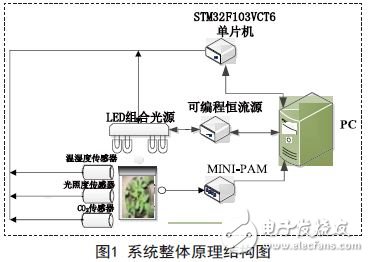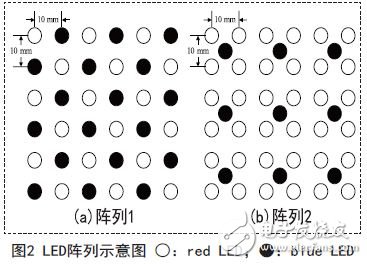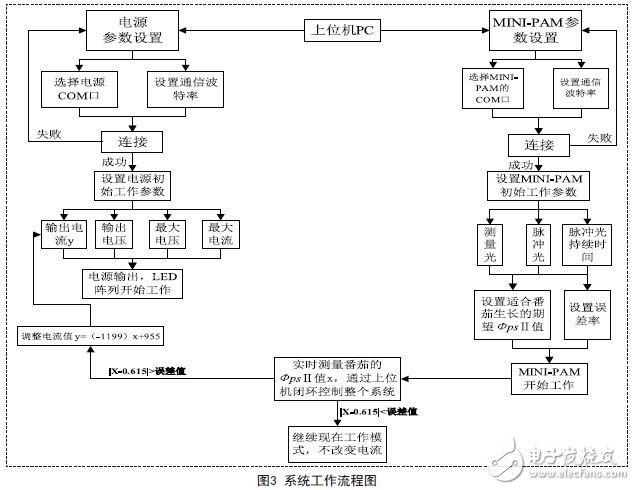
Privacy statement: Your privacy is very important to Us. Our company promises not to disclose your personal information to any external company with out your explicit permission.

0 Preface
Photosynthesis is the material basis for the metabolism and energy of all substances in the biological world. Plants reflect the original light photosynthesis and release the light energy in a large fluorescence mode. Therefore, chlorophyll fluorescence has a close relationship with photosynthesis. In the past 30 years, research on LED artificial light sources in facility horticulture, plant facility cultivation, and space agriculture has attracted widespread attention worldwide. The results of different light quality on plants such as strawberries and orchids show that red light has an important effect on plant morphology and plant height regulation, and promotes the growth process of leaves. The leaves, stems and petioles of plants will elongate. However, the chlorophyll content is low, and growth indicators and dry matter accumulation are also reduced. The regulation of photosynthesis by blue light mainly focuses on the opening of stomatal, the differentiation of chloroplasts and the regulation of photosynthesis enzyme activity. POSPA and other studies found that under the action of monochromatic blue LED, the chlorophyll content was the highest and the number of stomata was the most. At present, in the study of the photosynthetic physiological characteristics of plants by composite spectroscopy, the combination of red and blue LEDs can have a positive impact on the growth and development of plants. Due to the monochromatic light treatment, the system uses red and blue light combination as an auxiliary light source for tomato growth. The closed-loop control of the host computer, the programmable power control LED array and the MINIPAM modulation fluorometer is carried out by software to analyze the growth conditions of the tomato under the optimal illumination conditions.
1. The overall structure of the system
The dynamic fill light control system uses MINI-PAM to monitor the actual photosynthetic efficiency of tomato and LED combined light source fill light to guide the greenhouse tomato fill light production. The system consists of five modules. The upper computer decision module is an industrial grade server, developed independently. Designed STM32 single-chip greenhouse environmental factor monitoring system, providing a stable current JBP-7510 programmable constant current source for the fill light source, high-power red and blue LED combined light source and MINI-PAM modulated fluorescence detector. With the fluorescence parameters as the goal, the output current of the programmable constant current source is continuously adjusted in the greenhouse environment to change the illumination intensity of the LED combined light source, and then the fluorescence parameter ΦPSII of the tomato is changed to the expected value to achieve the effect of artificial regulation of tomato photosynthesis. The basic schematic diagram of the system is shown in Figure 1.

2. Monitoring system hardware design
2.1 LED combined light source power supply module
JBP-7510 programmable constant current power supply is a current power supply. Under rated working conditions, it can output a stable desired current. In order to accurately control the LED combined light source driving current and achieve the purpose of controlling the light source illumination conditions, choose a stability. A high current source is very important. The programmable constant current source has a constant output current, so the current is not affected by the load, and the magnitude of the driving current directly controls the brightness of the LED lamp bead, so the current source can accurately control the light intensity of the LED combined light source. The programmable constant current source voltage output is up to 75V, the voltage accuracy is 0.05%+37.5mV, the current output is up to 10A, and the current accuracy is 0.1%+10mA. According to the fluorescence parameter upper computer, the appropriate fill light current value is calculated, the command is sent to the power supply through serial communication, and finally the stable output current provided by the programmable constant current source is used to drive the LED combined light source.
JBP-7510 programmable control constant current power supply test the control current and actual current under the condition of driving LED fill light source at room temperature 25 degrees Celsius. From the data result analysis, the current accuracy is better than ±0.2%, so JBP -7510 programmable control constant current supply current accuracy can meet the output accuracy of the system fill light current.
2.2 LED array design
By using the characteristics of LED light concentration and direction fixation, it is necessary to make reasonable planning, optimization and improvement to make the red and blue LEDs uniform in the illumination area. The complementary light of tomato is mainly used for red and blue LEDs. The designed combined light source should ensure the uniformity of red and blue light in the light received by tomato. The ratio of red and blue LEDs of the two design schemes is 1:1 and 4:1. Array 1: The ratio of red and blue LEDs is 1:1, the LEDs are evenly spaced, and the adjacent LEDs are 10 mm apart. The array is shown in Figure 2(a). Array 2: The ratio of red and blue LEDs is 4:1. The red LED and blue LED form an area, and the blue LED is at the center. The array is shown in Figure 2(b).

2.3 MINIPAM modulation fluorescence detector
The MINIPAM pulse-modulated chlorophyll fluorescence instrument is manufactured by WALZ Co., Ltd., and the system uses the correlation fluorescence value of the steady-state fluorescence yield Fs under plant light adaptation and the maximum fluorescence yield Fm under light adaptation. Through the RS-232 interface and the host computer for two-way communication, the host computer closed-loop control MINIPAM and LED lighting array.
3. Software design of tomato growth dynamic fill control system
Dynamic fill light is based on the information collection and storage of the host computer, data analysis, and issuing commands. The dynamic cycle process is coordinated by the environmental factor monitoring system, the portable modulation fluorometer and the programmable constant current source. The specific process is shown in Figure 3. .

The environmental factor monitoring module based on STM32F103VCT6 single-chip microcomputer is used to monitor the tomato growth environment in real time, and the environmental factors obtained by the sensor are transmitted to the upper computer. When the illumination in the greenhouse is insufficient, the upper computer starts MINIPAM and obtains the return value of the fluorescence parameter (ΦPSII value). The light intensity of the fill light and the appropriate red and blue LED combination ratio, respectively, the LED combined light source operating current value command is given to the JBP-7510 programmable constant current source communicating with COM1, and the red and blue LED proportional commands are issued to the STM32F103VCT6 single chip microcomputer. The red and blue LED combination light source adjusts its brightness by driving current, and the STM32F103VCT6 MCU controls the current of each LED to achieve the control ratio. The MCU continues to monitor the lighting conditions and cyclically contrasts the dynamic fill light until the fluorescence parameters are maintained at a predetermined value. The MINI-PAM periodically transmits the collected tomato fluorescence parameters through the COM2 port of the upper computer and stores it on the upper computer. The upper computer determines whether the fluorescence parameter is higher or lower than a predetermined value, and then determines the control chip and the actuator and the programmable control current. Source, real-time adjustment of the greenhouse environment, to ensure the best LED combination source red, blue light combination ratio and brightness, so that the greenhouse environmental factor control model becomes the best tomato growth model.
4. Conclusions and prospects
At present, a dynamic fill light system has been initially constructed, and the system is used to monitor the 24-hour fluorescence parameters. According to the actual needs, based on the LED light source, according to the action process of the monochromatic LED and the combined LED light source on the plant, the LED combination ratio parameters suitable for different growth stages of the plant are designed, and the LED output light is utilized by the optimal LED light source design. The relationship between the strong and the fluorescence parameters, the best matching source information and the illumination period are input into the computer system in real time, and the computer guides the dynamic output according to all the collected fluorescence parameters and environmental factor information to realize the dynamic fill light system, the system mainly In view of the characteristics of low temperature and low light in greenhouses in northern China, tomato was used as the research object, and the light filling mode under low temperature and low light was established, and tomato growth under the influence of optimal light source, different growth period and different environmental parameters (moisture and temperature) was established. Control model.
Письмо этому поставщику

Privacy statement: Your privacy is very important to Us. Our company promises not to disclose your personal information to any external company with out your explicit permission.

Fill in more information so that we can get in touch with you faster
Privacy statement: Your privacy is very important to Us. Our company promises not to disclose your personal information to any external company with out your explicit permission.